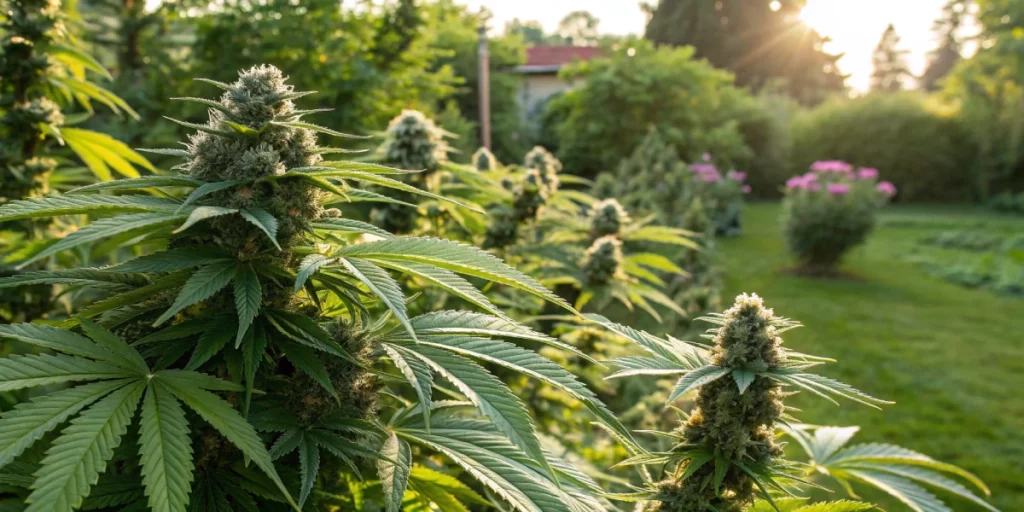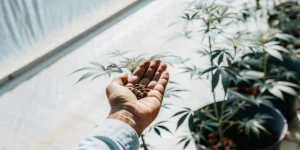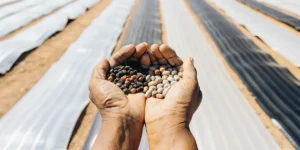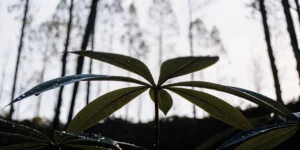Strain Heritage
Origin Story
Northern Lights traces back to the Pacific Northwest in the 1970s. Breeders selected Afghani and Thai landrace varieties to blend resilience with potent resin production. Over decades, growers refined its genetics to create the legendary strain celebrated today. Its lineage earned a spot in countless grow journals because it consistently delivered stable, vigorous plants that thrived indoors and outdoors alike. Beyond its reputation, Northern Lights set a benchmark for modern hybrid breeding.
The genetic journey began when pioneers shipped cuttings worldwide. Cultivators in the Netherlands and the United States embraced the strain’s forgiving nature. They tuned grow techniques, coupling it with new varieties to develop hybrids boasting faster flowering times and unique cannabinoid profiles. Yet, Northern Lights retained its classic traits, making it a cornerstone in any breeder’s collection. This heritage underpins why it remains a top choice for cultivators seeking reliable performance.
Classic Effects
Cultivators adore Northern Lights for its balanced, soothing high. Users report a wave of gentle euphoria that melts stress without trapping them on the couch. This effect profile lends itself to social evenings when you need calm confidence more than jittery energy. Plus, its steady onset helps newcomers avoid overwhelming sensations, so they can ease into the experience with fewer surprises.
Furthermore, many consumers favor Northern Lights when they need rest. Its subtle body relaxation soothes aches and encourages a restful mindset. Nighttime users often praise its capacity to quiet racing thoughts and lead them into deep sleep. Whether battling insomnia or seeking peaceful downtime, this classic strain delivers predictable outcomes that keep enthusiasts coming back.
Terpene Profile
Northern Lights offers a comforting aroma featuring sweet pine and earthy musk. Myrcene dominates the profile, contributing herbal, balsamic notes that invoke a forest floor after rain. This terpene harmonizes with pinene, which adds a crisp, fresh needle scent that enlivens the nose. Together, they create a complex yet approachable scent that welcomes both novices and veterans.
Minor terpenes like caryophyllene and limonene round out the bouquet. Caryophyllene brings a peppery spice kick, while limonene hints at citrus brightness. These compounds may enhance mood-lifting properties and support the calming experience. Overall, the terpene mix in Northern Lights offers a sensory journey that complements its tranquil effects and ensures each smoke or vapor session feels rich and rewarding.

Seed Varieties
Feminized Options
Many growers rely on feminized seeds to ensure every plant delivers potent buds without male surprises. Breeders produce these seeds by manipulating plant hormones, so they only yield female flowers. Growers looking for simplicity and consistency often choose northern lights cannabis seeds feminized varieties. This approach cuts down on rogue male plants that can pollinate and ruin an entire crop.
Moreover, feminized northern lights cannabis seeds guarantee a straightforward grow cycle. You won’t waste space or time identifying and removing males. Instead, you channel energy into trimming, training, and nurturing flower sites. This streamlined method appeals to first-time cultivators who appreciate a predictable garden and to seasoned veterans seeking maximum bud production from limited grow areas.
Regular Seeds
Regular seeds contain both male and female genetics, as nature intended. Some purists favor regular northern lights cannabis seeds because they preserve true genetic diversity. This variety lets breeders hunt for unique traits, creating eventual hybrids that push flavor, yield, or cannabinoid profiles further. Moreover, regular seeds cost less per unit, making bulk breeding projects more economical.
Planting these seeds demands more attention. Growers must monitor pre-flowering individuals to spot pollen sacs on males. Removing or isolating male plants prevents accidental pollination and seed production. This practice sharpens grower skills and deepens familiarity with plant development. Regular seeds reward this extra effort by unlocking new breeding possibilities that feminized lines cannot replicate.
Autoflowering Choices
Autoflowering Northern Lights cannabis seeds deliver a fixed life cycle from seed to harvest, typically in eight to ten weeks. These seeds blend Ruderalis genetics, giving plants the ability to switch from vegetative growth to flowering regardless of light schedule. As a result, cultivators can run more cycles annually or stack harvests in tight spaces without complex light timers. Strains like Gorilla Glue #4 Autoflower also benefit from this trait, offering potent yields and resilient growth in a compact, fast-finishing format.
Furthermore, autoflowering varieties require less maintenance. They tend to stay compact, making them ideal for stealth grows or small closets. Their rapid finish also reduces exposure to pests and mold in humid climates. For busy cultivators or those experimenting with outdoor SOG (Sea of Green), autoflowering options deliver speedy results and reliable bud sites every cycle.
Germination and Early Care
Soil vs. Hydro Germination
Cultivators face a key decision: start seeds in soil or hydroponic mediums. Soil offers natural buffering, reducing shock when roots expand. Many beginners opt for organic soil mixes enriched with coco coir, perlite, and compost to support root health. These components ensure proper aeration and moisture retention, helping germinated seedlings push through the surface quickly—especially when growing resilient strains like Blue Cheese Auto, which thrives in well-balanced organic substrates.
In contrast, hydroponic germination uses inert media like rockwool cubes soaked in nutrient solution. This method speeds up root development because plants access water and minerals directly. Yet, growers must monitor pH and nutrient levels precisely to avoid burn. Hydro setups suit experienced gardeners willing to track EC and maintain consistent water temperatures, leading to vigorous early growth.
Temperature Guidelines
Maintaining an ideal germination temperature between 21 °C and 25 °C (70 °F to 77 °F) maximizes sprouting rates. In this range, metabolic processes accelerate, and energy from the seed converts efficiently into root and shoot growth. You can achieve consistent warmth by using seedling heat mats under trays or housing seeds in a propagator with a built-in thermo gauge.
Avoid letting the medium dip below 18 °C (64 °F). Cold slows germination and leaves seedlings vulnerable to damping-off disease. Conversely, temperatures above 28 °C (82 °F) stress embryos, causing skewed leaf growth or weak stems. Regularly check trays and adjust ventilation. This attention ensures each seed taps its full potential as it embarks on rapid, healthy development.
Early Light Management
After sprouting, seedlings require gentle light to stimulate robust leaf expansion. Position full-spectrum LEDs or fluorescents about 30 cm (12 in) above the canopy. This distance prevents heat stress or leaf burn. Run lights on an 18/6 schedule to mimic springtime sun, supporting healthy photosynthesis without overtaxing young plants.
Monitor seedlings for signs of stretch or leaf curling. If plants lean toward rails or bulbs, adjust lighting or add gentle fans to strengthen stems. Transition gradually to more intense lighting over two weeks. This measured approach develops sturdy architecture, setting the stage for dense bud sites later in the cycle.
Veg and Flower Stages
Pruning for Yield
Strategic pruning redirects energy into prime bud sites and boosts airflow. Remove lower shoots that receive little light, commonly called lollipopping. This practice focuses plant vigor on top cola formation. Many growers trim early in the vegetative phase, when each cut encourages bushier growth and shorter internodes.
Moreover, topping and FIMing help create multiple main colas. These low-stress training methods boost yields by producing more flowering tips. While you prune, sanitize scissors to prevent disease transmission. Regular maintenance opens the canopy, reducing mold risk and ensuring buds develop evenly across the canopy.
Nutrient Timeline
During vegetative growth, plants need higher nitrogen levels to build lush foliage. Choose balanced N-P-K fertilizers, and feed at half strength initially. Gradually increase concentration as leaves expand. This incremental approach prevents nutrient burn and fosters vibrant growth.
When flowering begins, shift to bloom formulas rich in phosphorus and potassium. These elements support bud density and resin production. Begin this transition two weeks into the bloom phase. Continue feeding every watering session, but monitor runoff pH. Keeping inputs optimized ensures plants transform leafy nodes into heavy colas loaded with cannabinoids.
Lighting Intensity
Vegging plants thrive under 400–600 μmol/m²/s of photosynthetically active radiation (PAR). This output encourages leaf proliferation without risking heat damage. LED panels and HPS lamps both deliver ample light, but monitor distances to maintain intensity without scorching.
In bloom, elevate light levels to 600–900 μmol/m²/s to maximize bud growth. High-intensity light increases resin synthesis and cannabinoid content. Employ light movers or reflective materials to distribute photons evenly. By managing intensity and spread, you prevent hotspots and ensure every bud sees sufficient energy for optimal development.
Harvest Characteristics
Aroma and Flavor Notes
Harvested buds give off a rich, pine-scented aroma with sweet undertones. As trichomes ripen, you’ll notice hints of spice from caryophyllene and citrus from limonene. Each sniff reveals complex layers that hint at its Afghani lineage. When ground, the dried flower releases earthy notes that transition into a forest-like freshness.
Smoking or vaporizing sparks a smooth taste that carries mild sweetness on the exhale. No harsh throat burn interrupts the experience. Instead, users often report lingering herbal flavors that encourage slow, mindful puffs. This balanced profile makes the strain versatile, fitting social sessions as well as solo relaxation.
Expected Yields
Northern Lights offers moderate to high yields in both indoor and outdoor gardens. Indoor cultivators can expect 400–500 g/m² under optimal lighting and training. Implement SCROG or SOG techniques to further boost bud site density and maximize canopy use.
Outdoors, mature plants can produce 500–600 g per plant when positioned in full sun. Ensure proper support for heavy colas to prevent branch breakage. Regular feeding and environmental control amplify yields. With attentive care, growers consistently harvest plentiful resin-coated buds that reward their effort.
Dry and Cure Advice
After harvest, hang branches upside down in a dark room at 18–20 °C (64–68 °F) with 50–60% humidity. This environment slows drying, preserving terpenes and preventing mold. Allow two weeks for stems to snap rather than bend, signaling ideal dryness.
Once dry, trim buds into airtight glass jars and burp them daily for the first fortnight. This process releases moisture and maintains equilibrium. Rotate buds gently to expose all sides. After three to four weeks of cure, terpenes fully mature and flavors intensify. Patience during this stage pays dividends in aroma and effect quality.

FAQs about northern lights cannabis seeds
How many weeks to flower?
Northern Lights typically flowers in eight to ten weeks from flip to harvest. Experienced growers monitor trichome coloration to time the cut accurately. This window may shift slightly with environmental factors like temperature and light intensity. However, most cultivators plan for a nine-week bloom cycle to ensure peak resin production and flavor development.
Does it handle cold climates?
Yes, Northern Lights shows remarkable resilience to cooler temperatures compared to many hybrids. Plants can tolerate night drops into the low teens Celsius without major stress. Outdoors in temperate regions, growers often harvest in early autumn before frost. Ensuring good airflow and avoiding excess moisture further protects buds from mold in damp conditions.
What’s the typical plant height?
Under optimal indoor conditions, plants reach 80–100 cm tall. This compact stature suits tents and small rooms. When grown outdoors, height can swell to 1.2–1.5 m under full sun. Strategic training further controls vertical growth. By topping and bending branches, cultivators maintain manageable heights while boosting lateral bud production.





